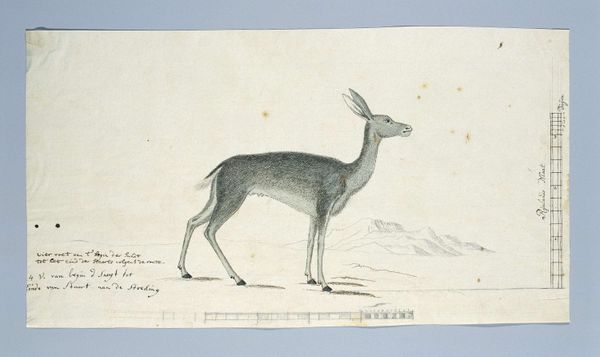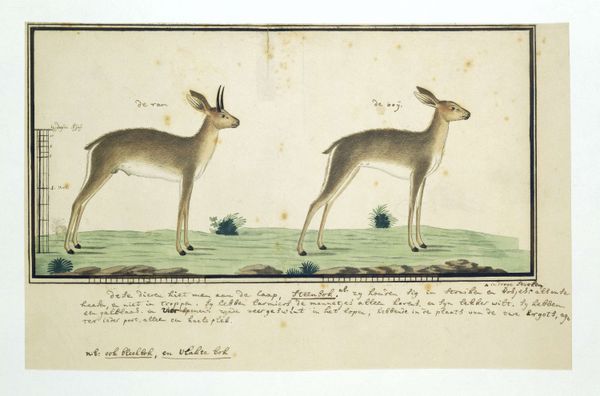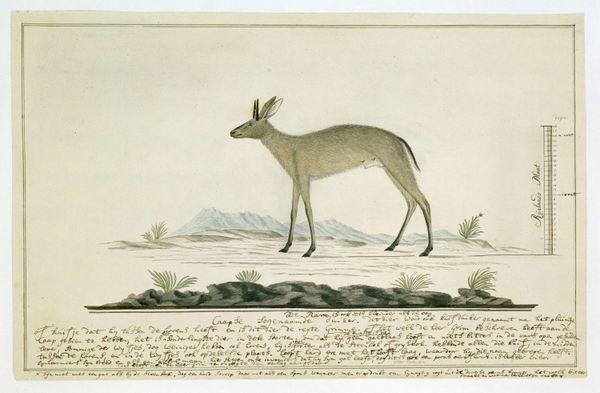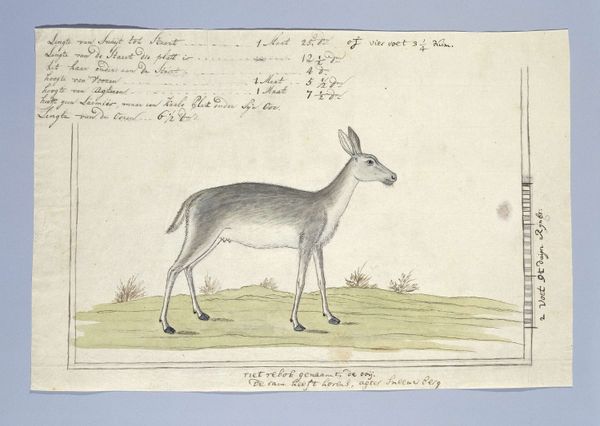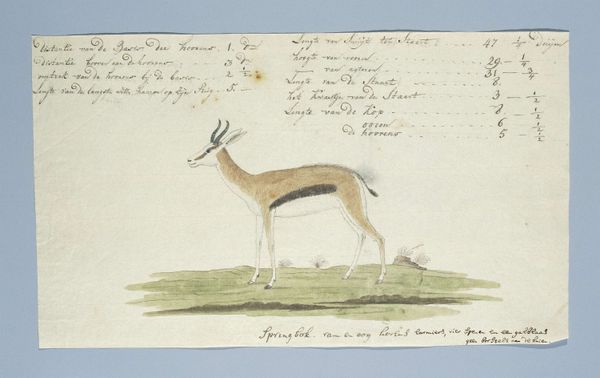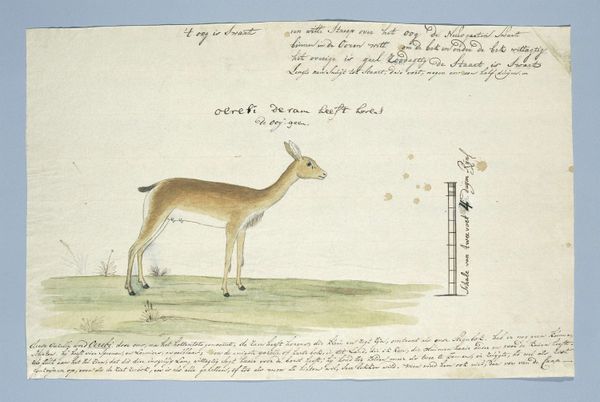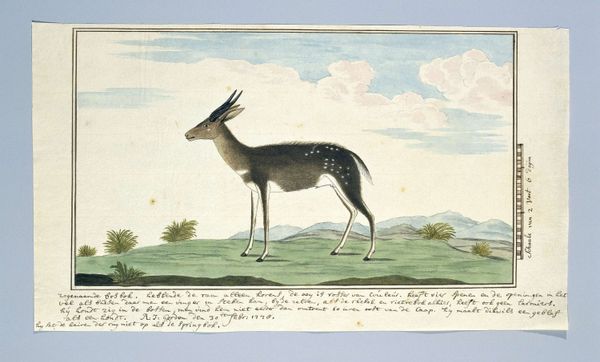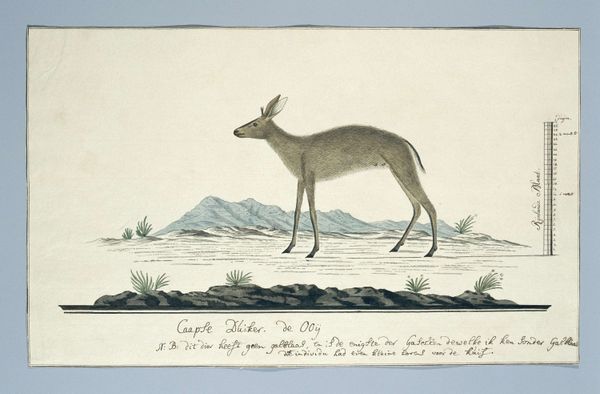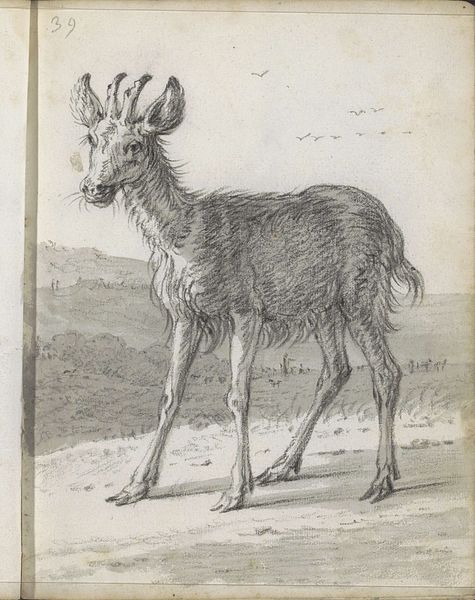
drawing, watercolor
#
portrait
#
drawing
#
animal
#
landscape
#
watercolor
#
coloured pencil
Dimensions: height 660 mm, width 480 mm, height 231 mm, width 378 mm, height mm, width mm
Copyright: Rijks Museum: Open Domain
Editor: The quietude of this work immediately strikes me. There's something profoundly still and observant about the animal's posture and expression. Curator: Indeed. What we’re looking at is a watercolor and colored pencil drawing entitled "Pelea capreolus (Grey rhebok)," possibly created between 1777 and 1786 by Robert Jacob Gordon. The artwork showcases a grey rhebok in a minimalistic landscape setting. Editor: Minimalistic is the perfect term. The focus here is unequivocally on the animal itself, and how its form and depiction speaks. What intrigues me are the washes of watercolor and how they capture a light and form simultaneously—almost diagrammatically rendered. Curator: Yes, and observe how Gordon uses subtle shifts in tone and line work to delineate the animal’s anatomy. The delicate rendering creates a sense of realism but does not detract from the art's intrinsic qualities. We can also read it as a sort of inventory or recording process. Editor: A record certainly—but one rooted in specific materiality and method. Note the type of paper, for example, and how that affects the uptake of pigment, almost giving the whole piece a specific atmosphere due to these combined elements. The texture and how the paint behaves tells a story itself. And the question arises, what dyes would Gordon use to color this image? Curator: A valid point. This invites questions concerning the work's role as both artistic creation and documentary. Gordon carefully considered his representational choices, the pose, the way light interacts to reveal form, and these aesthetic judgments inevitably shape how we, as viewers, engage with the piece. Editor: Precisely! This dance between artistic intervention, material consideration, and observation reveals a whole story in the depiction itself. It gives you much to think about in terms of the contextual moment of production of an artwork like this one, doesn't it? Curator: It truly does. The synthesis of meticulous observation with calculated aesthetic decisions elevates it beyond mere biological illustration. Editor: Well, I found this deeper dive into materiality incredibly enlightening. I'm beginning to reconsider my initial perceptions. Curator: And I feel a newfound respect for Gordon's technical skill, viewing the rhebok as both an artistic subject and object of study.
Comments
No comments
Be the first to comment and join the conversation on the ultimate creative platform.
